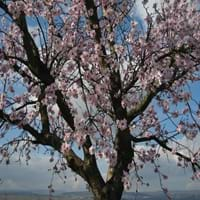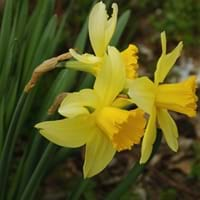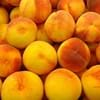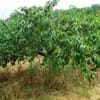Life Span
Perennial
Perennial
Origin
Northern Africa, Western Asia
Asia, Central Asia, Eastern Asia, Southwest Europe
Types
Bitter Almonds, Chinese Almonds, Green Almonds
Accent, Acropolls, Cassata,Dellbes, Flower parade, Hawera
Number of Varieties
Not Available
Habitat
Dappled Shade, Sunny Edge, Woodland Garden Secondary
Hillside, Open scrub, River side, Rocky areas, Scrubs, Woods
USDA Hardiness Zone
5-8
3-9
Sunset Zone
2b, 3b, 8, 9, 10, 12, 13, 14, 15, 16, 19, 20, 21
A2, A3, 1a, 1b, 2a, 2b, 3a, 3b, 4, 5, 6, 7, 8, 9, 10, 11, 12, 13, 14, 15, 16, 17, 18, 19, 20, 21, 22, 23, 24
Habit
Oval or Rounded
Clump-Forming
Flower Color
White, Light Pink
Ivory, Lemon yellow, Peach, White, Yellow, Yellow green
Flower Color Modifier
Bicolor
Bicolor
Fruit Color
Green
Not Available
Leaf Color in Spring
Light Green
Green
Leaf Color in Summer
Light Green
Green
Leaf Color in Fall
Light Green, Yellow green
Green
Leaf Color in Winter
Light Green
Green
Leaf Shape
Egg-shaped
Linear
Plant Season
Spring, Fall
All year
Sunlight
Full Sun
Part sun
Growth Rate
Medium
Medium
Type of Soil
Loam, Sand
Clay, Loamy, Sandy
The pH of Soil
Neutral
Acidic
Soil Drainage
Well drained
Well drained
Bloom Time
Early Spring, Spring, Late Winter
Early Spring, Late Spring, Spring
Tolerances
Drought
Black Walnut Toxicity
Where to Plant?
Container
Ground
How to Plant?
Budding, Grafting
From bulbs
Plant Maintenance
Medium
Medium
Watering Requirements
Do Not over Water, Water Deeply
It cannot sustain wet-feet, Keep the ground moist but not water-logged, Water Deeply, Water when soil is dry
In Summer
Lots of watering
Lots of watering
In Spring
Moderate
Moderate
In Winter
Average Water
Average Water
Soil Type
Loam, Sand
Clay, Loamy, Sandy
Soil Drainage Capacity
Well drained
Well drained
Sun Exposure
Full Sun
Part sun
Pruning
Heading cuts, Remove damaged leaves, Remove dead branches, Remove dead leaves, Thinning
Cut or pinch the stems, Prune to control growth, Remove dead leaves, Remove dead or diseased plant parts
Fertilizers
Apply 12-12-12 amounts
All-Purpose Liquid Fertilizer
Pests and Diseases
Almond brownline and decline, Almond kernel shrivel, Alternaria Leaf Spot, Hull rot
Basal rot, Crown rot, Fire, Leaf spot, Scorch, Viruses
Plant Tolerance
Drought
Drought
Flower Petal Number
Not Available
Single, Double
Foliage Texture
Medium
Medium
Foliage Sheen
Matte
Matte
Attracts
Insects
Not Available
Allergy
Diarrhea, Mild Allergen, Nausea, Swelling in mouth
Asthma, Rhinoconjunctivitis
Aesthetic Uses
Beautification
Showy Purposes
Beauty Benefits
Acne, Blackheads, Good for skin, Moisturizing, Prevents greying of hair
Not Available
Environmental Uses
Air purification
Air purification
Medicinal Uses
Antiemetic, Antitumor, Emollient, Nutritive, Pectoral
Asthma, Cold, Cough, Vomiting
Part of Plant Used
Seeds, Stem
Flowers, Leaves
Other Uses
Blended with water to make almond milk, Oil is used for aromatherapy, Used for making dark grey to green dye, Used for producing cooking oil
Showy Purposes
Used As Indoor Plant
No
No
Used As Outdoor Plant
Yes
Yes
Garden Design
Edible, Fruit / Fruit Tree
Not Available
Botanical Name
PRUNUS dulcis
Narcissus
Common Name
Almond, Sweet Almond
Daffodil
In Hindi
मीठा बादाम
हलका पीला
In German
Süße Mandel
Narzisse
In French
Amande douce
Jonquille
In Spanish
Almendra dulce
Narciso
In Greek
Sweet Almond
ασφόδελος
In Portuguese
Amêndoas doces
Abrótea
In Polish
słodkich migdałów
żonkil
In Latin
Almond Pulchra
Asphodelus
Phylum
Magnoliophyta
Magnoliophyta
Class
Magnoliopsida
Liliopsida
Order
Rosales
Asparagales
Family
Rosaceae
Amaryllidaceae
Clade
Angiosperms, Eudicots, Rosids
Angiosperms, Monocots
Tribe
Amygdaleae
Narcisseae
Subfamily
Amygdaloideae
Amaryllidoideae
Number of Species
Not Available
Season and Care of Sweet Almond and Daffodil
Season and care of Sweet Almond and Daffodil is important to know. While considering everything about Sweet Almond and Daffodil Care, growing season is an essential factor. Sweet Almond season is Spring and Fall and Daffodil season is Spring and Fall. The type of soil for Sweet Almond is Loam, Sand and for Daffodil is Clay, Loamy, Sandy while the PH of soil for Sweet Almond is Neutral and for Daffodil is Acidic.
Sweet Almond and Daffodil Physical Information
Sweet Almond and Daffodil physical information is very important for comparison. Sweet Almond height is 760.00 cm and width 760.00 cm whereas Daffodil height is 1.25 cm and width 1.25 cm. The color specification of Sweet Almond and Daffodil are as follows:
Sweet Almond flower color: White and Light Pink
Sweet Almond leaf color: Light Green
Daffodil flower color: Ivory, Lemon yellow, Peach, White, Yellow and Yellow green
- Daffodil leaf color: Green
Care of Sweet Almond and Daffodil
Care of Sweet Almond and Daffodil include pruning, fertilizers, watering etc. Sweet Almond pruning is done Heading cuts, Remove damaged leaves, Remove dead branches, Remove dead leaves and Thinning and Daffodil pruning is done Cut or pinch the stems, Prune to control growth, Remove dead leaves and Remove dead or diseased plant parts. In summer Sweet Almond needs Lots of watering and in winter, it needs Average Water. Whereas, in summer Daffodil needs Lots of watering and in winter, it needs Average Water.





